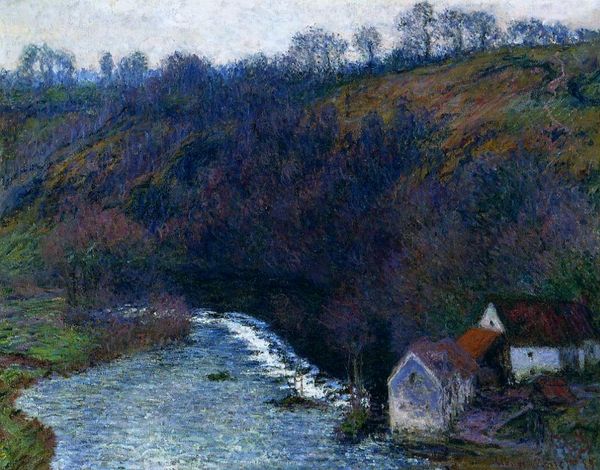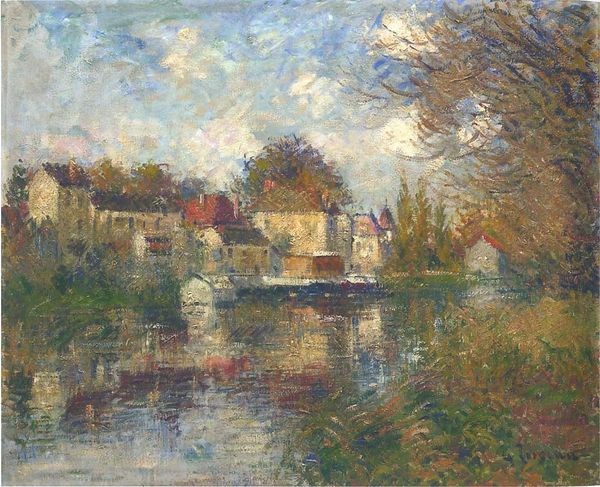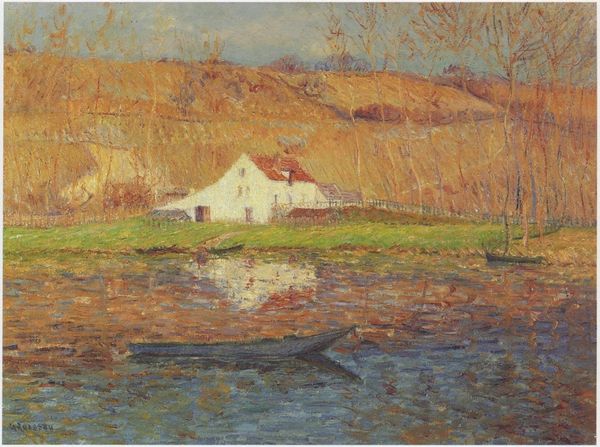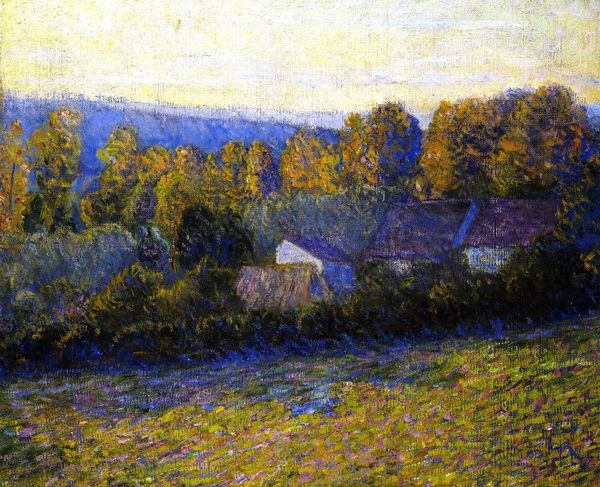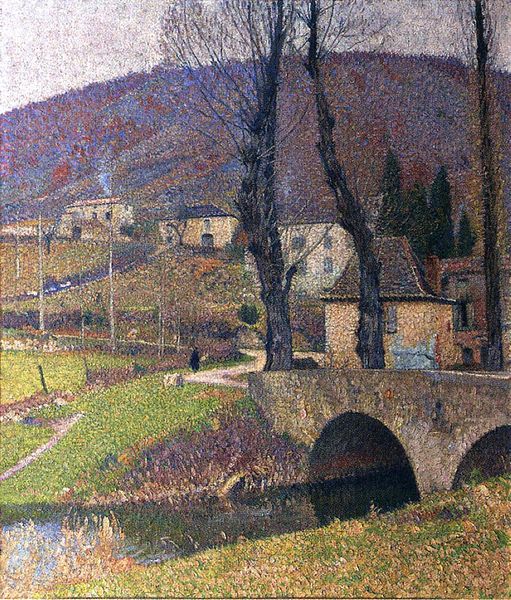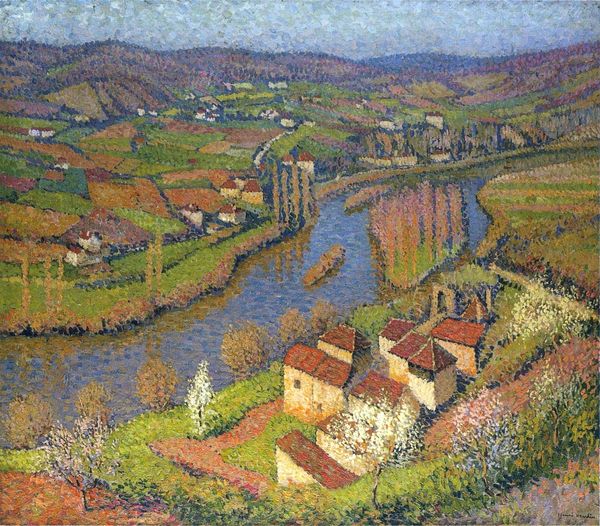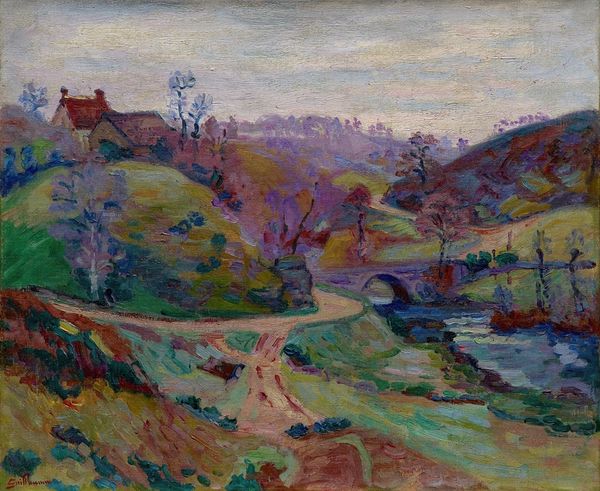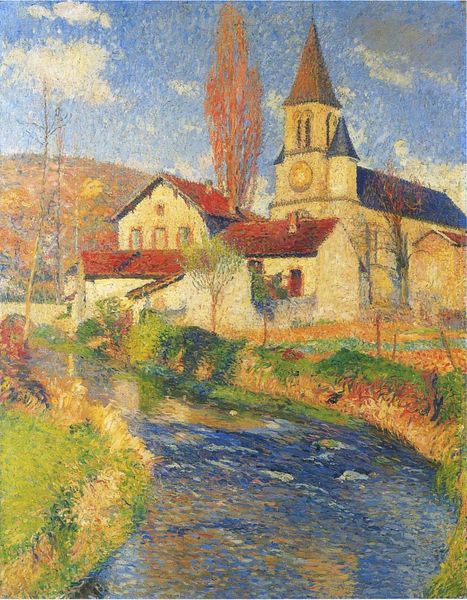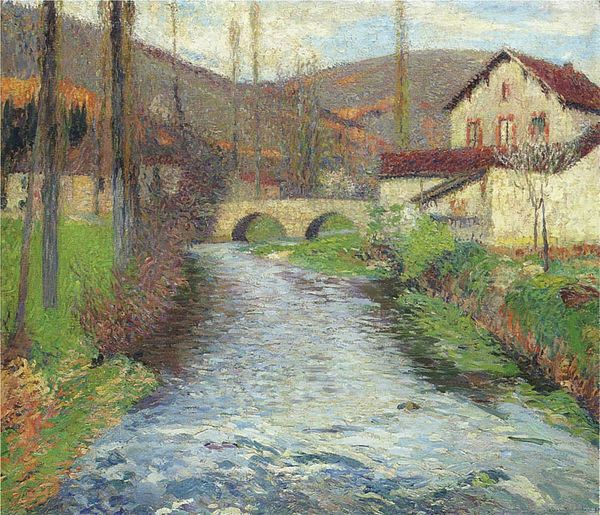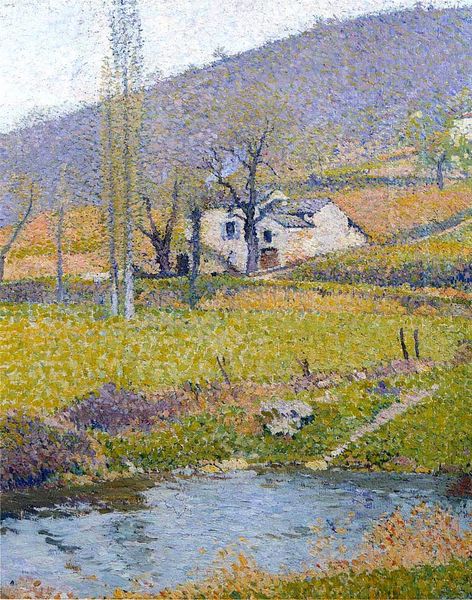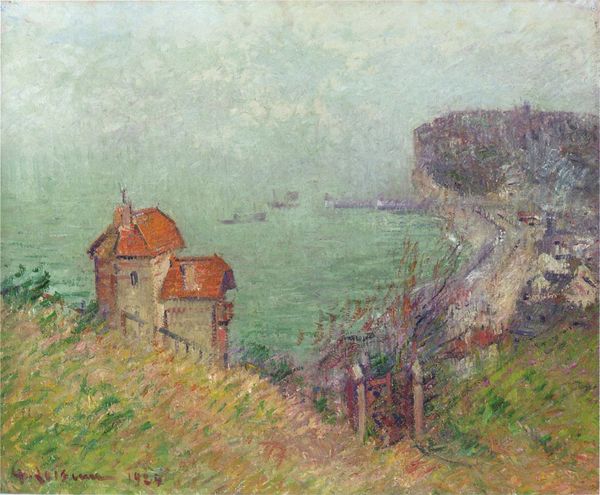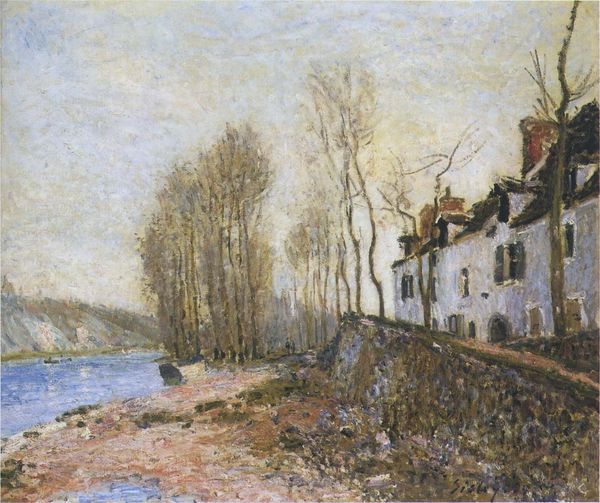
painting, plein-air, oil-paint
#
mother nature
#
painting
#
impressionism
#
plein-air
#
oil-paint
#
landscape
#
river
#
impressionist landscape
#
water
Copyright: Public domain
Curator: This is Claude Monet's "The Grande Creuse by the Bridge at Vervy," painted in 1889. Notice how he captures this landscape with such dynamic color and brushstrokes. Editor: Immediately, I feel the chill of a late autumn day. It’s almost melancholic; the colors, while vibrant, hint at the impending winter and perhaps also point at the dramatic upheavals happening socially at the time. Curator: Precisely! The composition is quite fascinating; Monet is, as usual, deeply concerned with the effects of light and how it plays across different surfaces – water, stone, foliage. He's broken down the scene into individual flecks of color. How does it all synthesize? Editor: I see the town almost nestled into the hillside, the water mirroring its structures and perhaps also reflecting a yearning for a harmonious relationship between people and place. But it is a relationship often strained. This painting to me represents a kind of romantic tension of man coexisting with, but also impacting the environment around him. Look at the smokestack, is it industry emerging into idyllic nature? Curator: I think focusing on the social issues distracts a bit too much from the picture, no? But, notice how the bridge functions as a horizontal stabilizer, dividing the painting into distinct zones – the wildness of the river below, and the domesticity above? I mean, Monet is concerned foremost with creating a cohesive pictorial structure through color relationships. Editor: Perhaps, but even these artistic choices are products of the culture in which Monet lived. It wasn’t an accident that Monet painted these scenes – he had privilege to engage with his work and the world around him in this way. What would a person of color see in this painting, when the dominant discourse centered around privileged perspectives, at that moment in time, or even this one? Curator: I appreciate how it evokes not only the sense of a specific place but also a fleeting moment in time, the transient quality of light. The forms may dissolve but their structure stands tall as Monet is considered. Editor: This encounter with Monet's perspective allows us to interrogate broader questions about whose gaze we privilege and whose stories we often overlook. This painting asks that. Curator: I walk away reminded how painting is first and foremost about color and form relationships that give meaning to a subject Editor: It reminds me of our responsibility to broaden our perspectives on beauty, and who has historically been denied access to it.
Comments
No comments
Be the first to comment and join the conversation on the ultimate creative platform.
